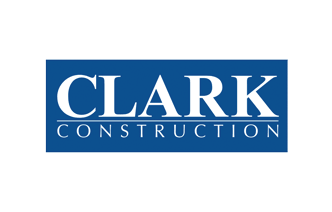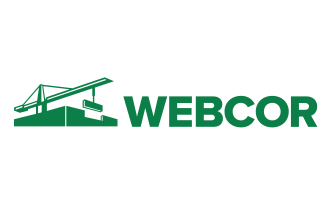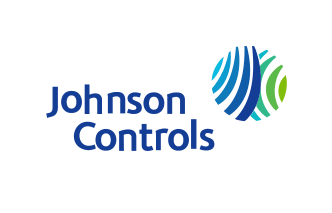How to Prevent Common Bottlenecks in Construction Project Workflows

There are many reasons a construction project may be considered a ‘success’. Coming in on budget is obviously important, but another factor is on-time completion, undoubtedly one of the most important attributes for any construction project. The quality of the build and meeting pre-set safety and health targets may also be important factors in determining the success of construction work.
However, few workplaces are as inherently complex and varied as a construction site. One thing is sure: no two construction sites are the same. Therefore, it’s not surprising bottlenecks are too often an issue for construction projects. These issues can result in stoppages or delays that can be costly and even threaten the viability of a construction project, regardless of size or scale.
Every effort should be made to stop ‘unavoidable’ delays in construction - which is completely doable. This article will explore four ways to prevent typical bottlenecks in construction project workflows.
Solid Risk Management
Potential bottleneck: Lack of comprehensive risk management can have grave consequences on a construction site, resulting in a heightened risk profile and, in turn, a higher risk of incidents that may cause bottlenecks.
Solution: Set up a solid risk management program that is risk-appropriate and specific to a given construction project/workflow.
A 2021 Taiwanese construction industry study found that risk factors affect the expected achievement rates of three main performance goals, namely cost/budget, schedule/time, and quality. The study concluded that a comprehensive risk management program was always required in order to mitigate risks. Failure to do so raises the risk of delays and other factors that adversely impact a project.
Any such risk program requires three crucial stages: risk confirmation, risk analysis, and the treatment of risk based on an assessed risk profile; a thorough risk analysis should be considered the core stage. Risk management is central to good planning and sound project management in construction. The upside is that a construction project is 2.5 times more likely to succeed if there is a risk-based project management system in place.
Intelligent Labor Management
Potential bottleneck: Labor shortages continue to be a major issue for construction worldwide, with the U.S. alone needing an estimated 1.28 million more construction workers by 2023, according to a 2021 analysis by Associated Builders and Contractors (ABC). There is also a lack of existing skilled labor in the industry.
Solution: Being acutely aware of the skills shortage in construction should mean a greater emphasis on worker training and upskilling. Wherever possible, adequate teams need to be hired in order to ensure project success.
Training is where it’s at in the US construction industry. The Associated Builders and Contractors estimated that firms spent an average of 8.4% of payroll on training, totalling more than $1.3 billion by its member companies during 2020 alone. It also found that 13% of member companies had an ongoing apprenticeship program registered at either the state level or with the federal Department of Labor. Apprenticeship programs are an excellent way of attracting Millennials and Gen Z candidates into an industry which is not faring well with younger generations.
Proper Equipment
Potential bottleneck: Improper or unfit-for-purpose machinery, equipment and tools can have serious consequences on any construction site. Too often this is due to cost-cutting or other consequences of budgetary constraints, with resultant issues. In the words of Benjamin Franklin: “The bitterness of poor quality remains long after the sweetness of low price is forgotten.”
Solution: Sound, risk-based investments in needed assets must be undertaken for a given project. Equally important, a comprehensive and sustainable management of existing assets also needs to be in place.
Every financially viable effort should be made to ensure investments in equipment made of good quality materials. These will tend to wear better with time, particularly in harsh weather or difficult environments. Quality equipment will also save on maintenance and repair costs. This is especially true of heavy-lifting equipment and mobile equipment, but is true of all equipment on a site, including smaller electrical machinery and hand tools.
This ethos of investing in quality should be applied to any and all personal protective equipment (PPE) required for a site and, in particular, lanyards and other fall protection equipment. The latter is an important consideration given that falling from heights continues to be a leading cause of fatalities and major injuries on construction sites.
Aligned to this is proper management, including maintenance, of existing assets. Construction asset management should be integrated into all operational cycles of a project - the operation, renewal or upgrading, as well as the eventual disposal of construction assets.
Sound Space Management
Potential bottleneck: Physical space is often at a premium on most construction sites, creating logistical and safety risks. Poorly-managed or ill-considered space-related issues can result in a worksite that hampers productivity, and creates safety issues. These can include site congestion, access restrictions, undue obstructions, and other factors that can impede workflows.
Solution: Spatial issues must be considered throughout a project’s life span.
A 2020 study conducted by an institute in Montreal, Canada, found that studies on space-related factors were almost non-existent in construction-related literature, even though spatial considerations are clearly important in the industry. New methods and technologies, such as building information modeling (BIM) and lean management, have been important in raising the importance of spatial management in the construction industry. This has had a clear benefit on workflows, given that space optimization directly results in improved productivity.
One methodology that can be useful is takt production, which is based on a Lean philosophy. Takt (which is derived from the German for ‘rhythm’) is an approach that breaks up any project into a series of small work sequences, which results in a focus on the flow of construction, rather than merely using resources. Space management is integral to a takt approach.
Of course, there are other factors that can also cause bottlenecks, and even serious delays, such as lax health and safety standards or a work culture that is deadline-obsessed. Nevertheless, focusing on the four factors outlined in this article should help ensure your construction site is devoid of unnecessary bottlenecks that impede project workflows.
To learn more about Fieldwire, please register for a live demo.
Bryan Christiansen is the founder and CEO of Limble CMMS. Limble is a modern, easy-to-use mobile CMMS software that takes the stress and chaos out of maintenance by helping managers organize, automate, and streamline their maintenance operations.



















